GROUP 7 ID
1/43
There's no tags or description
Looks like no tags are added yet.
Name | Mastery | Learn | Test | Matching | Spaced |
|---|
No study sessions yet.
44 Terms
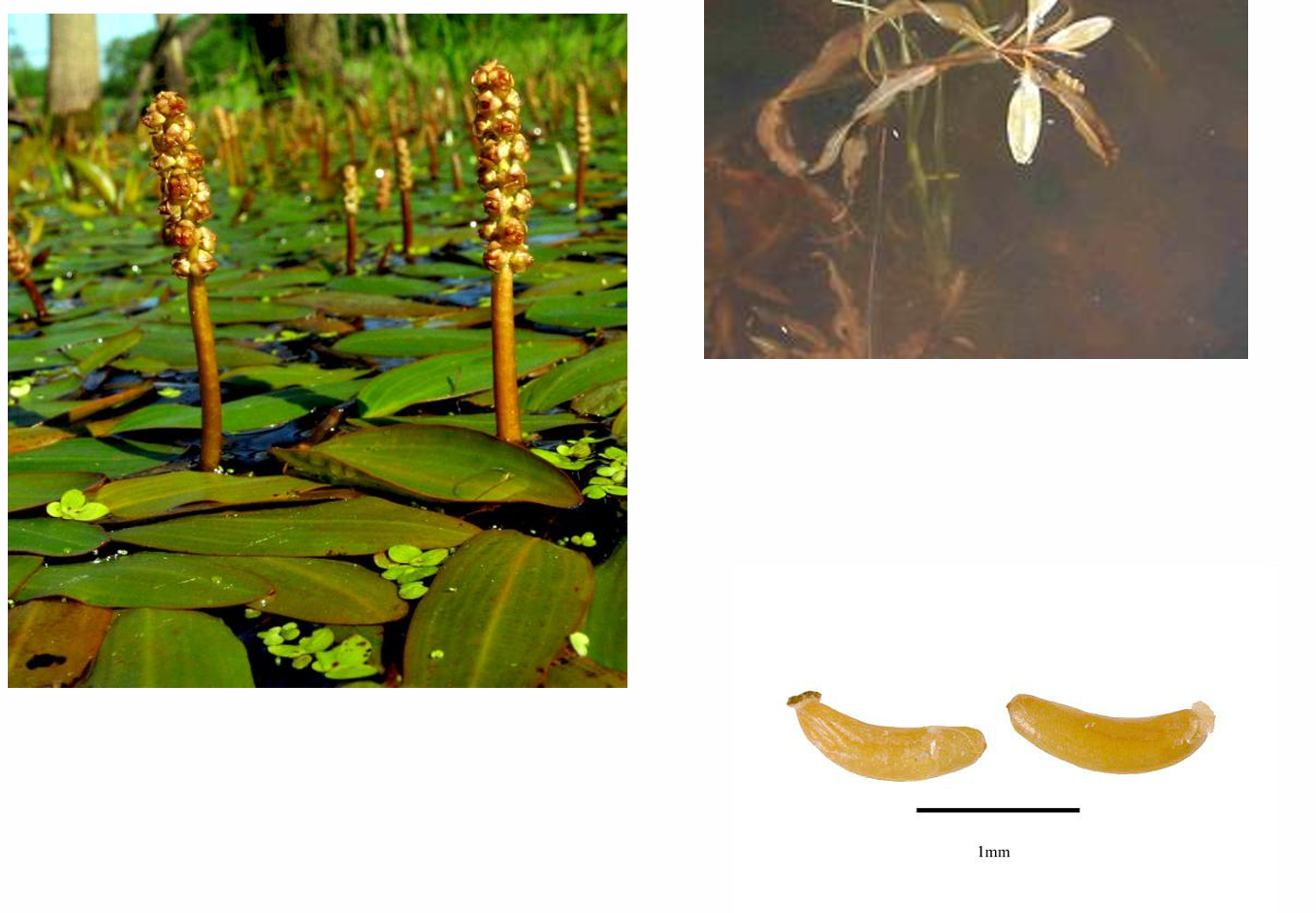
Potamogetonaceae FAMILY
Potamogetonaceae - pondweed family
Only in freshwater and rarely in marshy areas
-- Perennial
*****Leaves Alternate or opposite and are basally sheathed Blades are floating or submerged
**Floral characteristics Small axillary spikes
Floral parts in sets of 4
Fruit and Seeds 1-4 drupelets or achenes
---- Cotyledon Can looked coiled
Stems Herbaceous Often jointed
Roots Fibrous roots with rhizomes
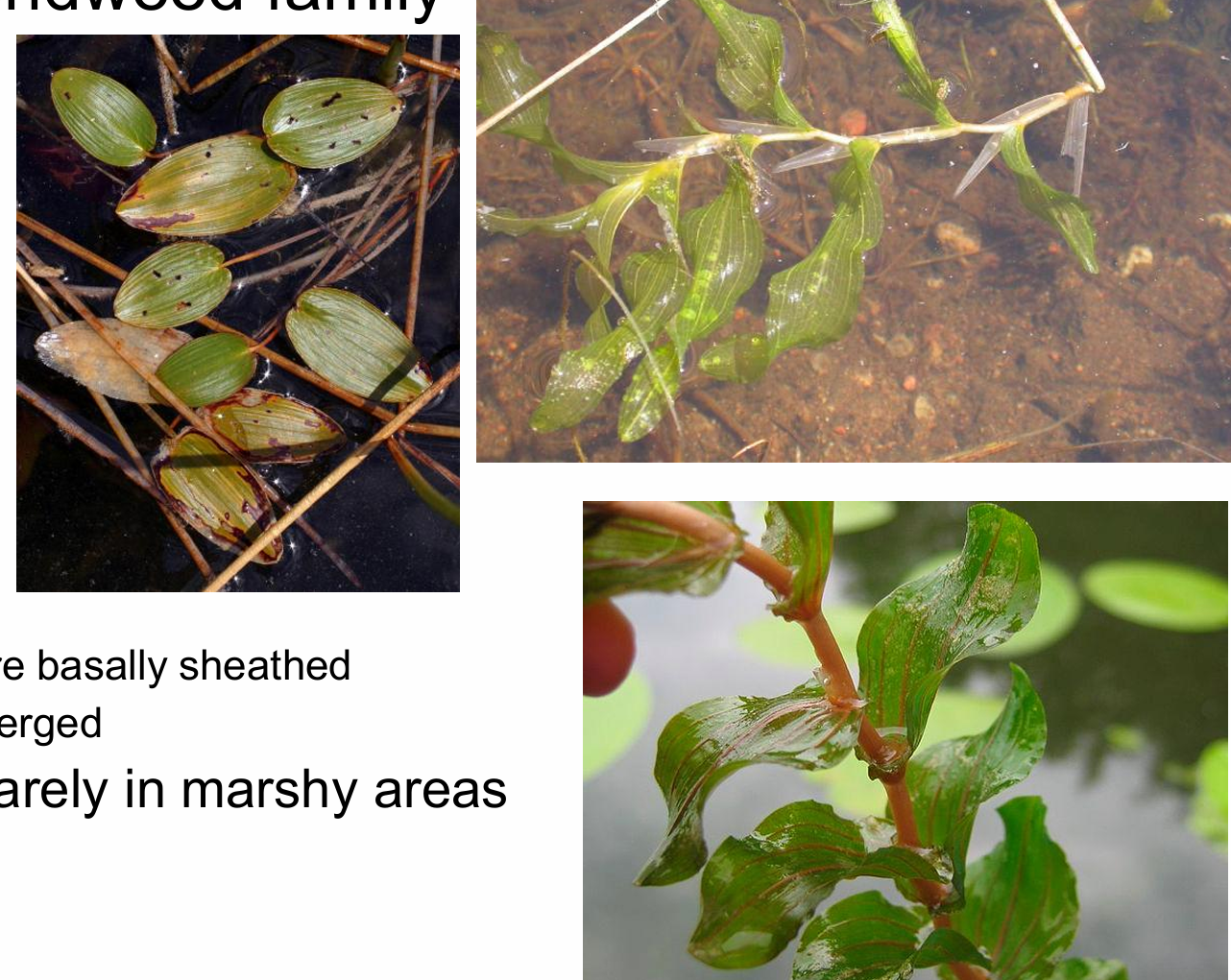
Potamogeton crispus
Potamogeton crispus (Potamogetonaceae)→ curlyleaf pondweed
• Perennial, submerged aquatic
• Oblong 2 –3 inch brown-green leaves are wavy along the edges, like lasagna noodles
• Leaves attach to the stem in an alternate pattern
• Secondary veins branch from a midvein in perpendicular pattern (native pondweeds have parallel leaf veins)
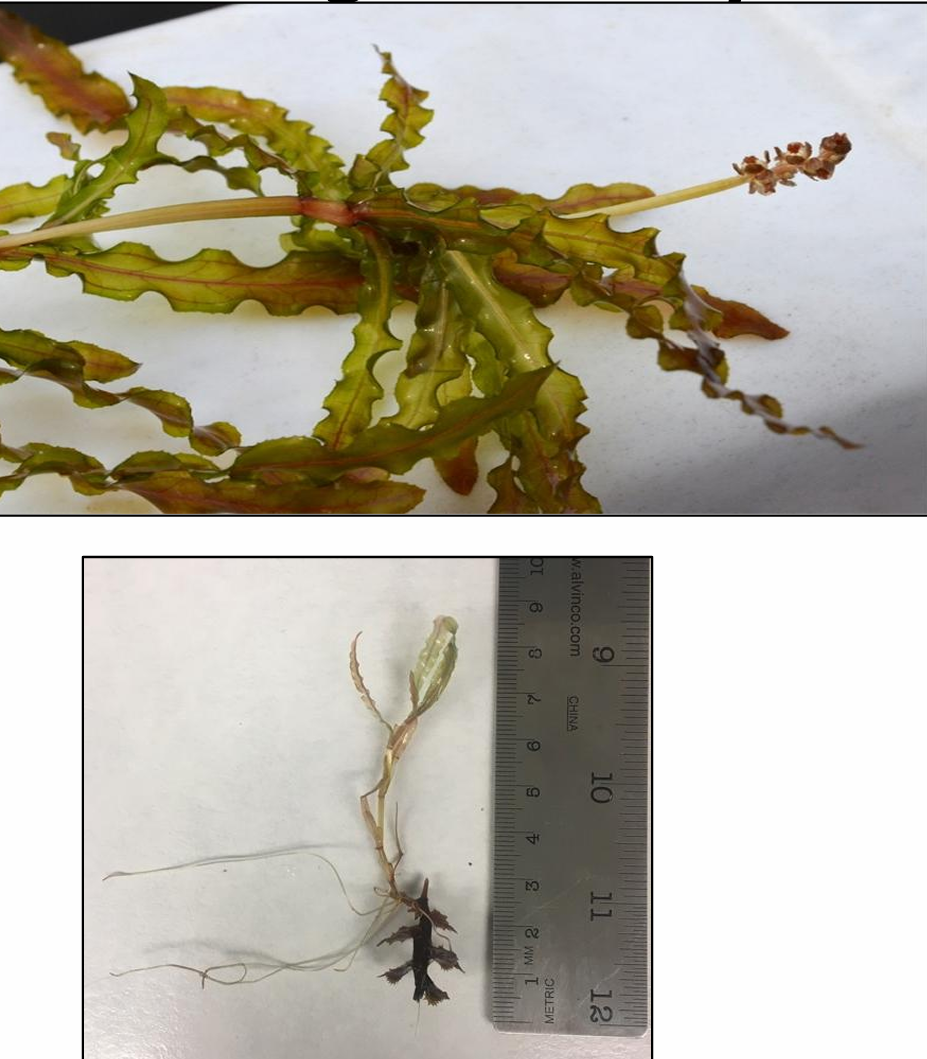
Potamogeton crispus: Identification
Potamogeton crispus (Potamogetonaceae)→ curlyleaf pondweed
• Flower stalks stick above the water’s surface and appear reddish-brown in color
• Plant produces small greenish brown pine cone look-a-likes called turions which sprout new plants
• Extensive root system can tolerate extreme conditions (has even been found growing under inches of snow and ice!)

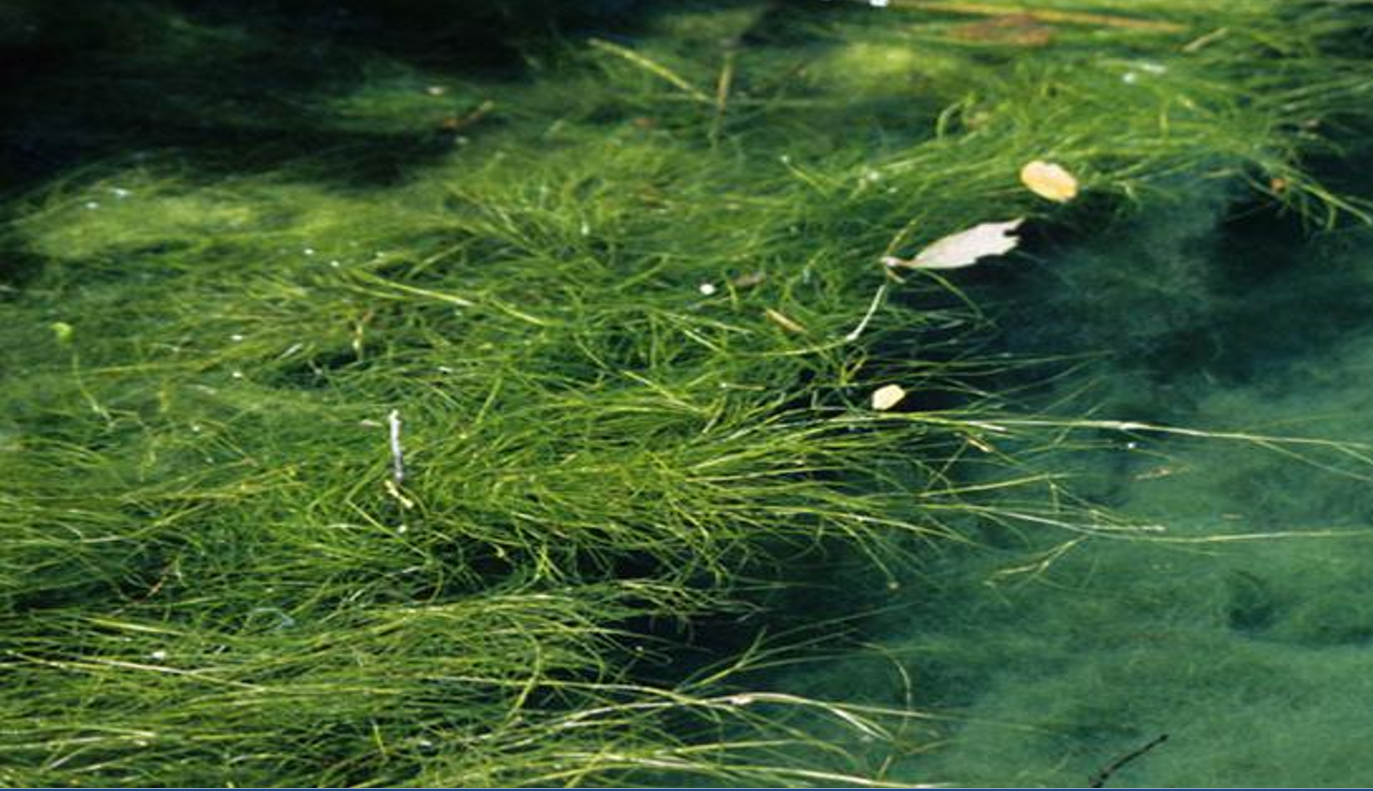
Stuckenia pectinata (Potamogetonaceae)
Stuckenia pectinata (Potamogetonaceae)→ sago pondweed
• Native to North America
• Perennial, submerged aquatic
• Stems are thin, long and highly branched
• Leaves very thin and filament-like, about 1/16 in. wide and 2-12 in. long tapering to a point
• Leaves grow in thick layers, originating from a sheat
Stuckenia pectinata: Identification
Stuckenia pectinata (Potamogetonaceae)→ sago pondweed
• Fruit is nut-like 1/8 to ¼ in. long and approximately 1/8 in. wide
• Plant regrows each year from thickly matted rhizomes
• Flowering reproductive stalk is the only part of plant above the water
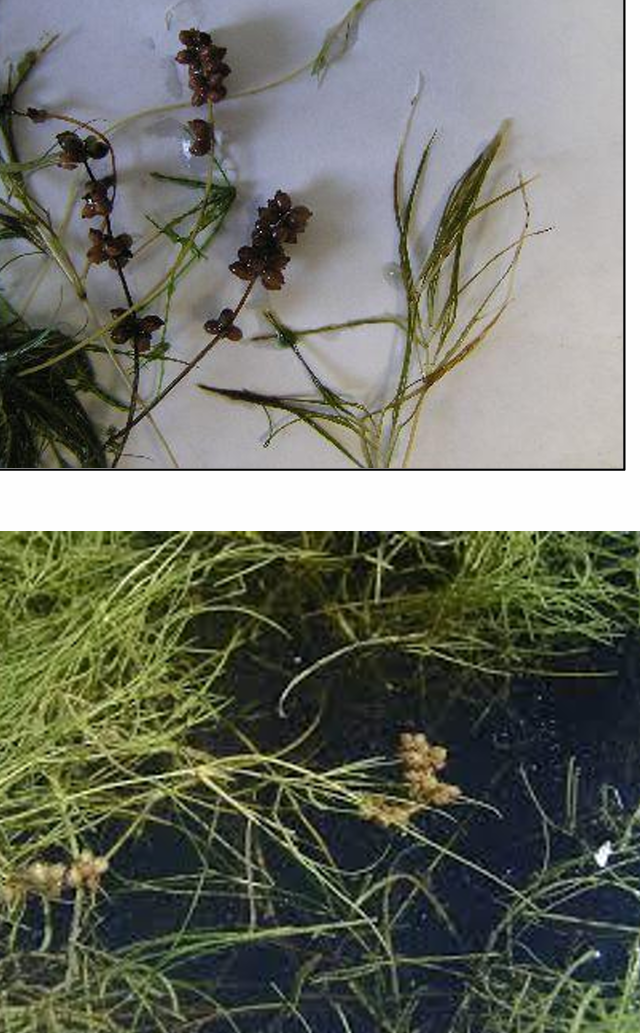
Hydrilla verticillata (Hydrocharitaceae)
Hydrilla verticillata (Hydrocharitaceae)→ hydrilla, waterthyme
CO LIST A
• Dioecious, perennial, submerged aquatic species.
• Female flowers consist of 3 sepals and 3 petals, white to reddish brown.
• Male flowers are inconspicuous and green.
• Reproduction by tubers, turions, seeds and stem fragments.
• Stems near the top of the water column are highly branched, forming dense mats.

Myriophyllum spicatum (Haloragaceae):
Myriophyllum spicatum (Haloragaceae) → Eurasian watermilfoil
CO LIST B
• Rooted, submersed perennial.
• Stems are reddish brown to light pink.
• Leaves are deeply divided (feather like).
• Leaves arranged in whorls of 3-6.
• Native milfoils have <14 leaflet pairs per leaf while the non-native milfoil generally has 14 or more pairs of leaflets per leaf
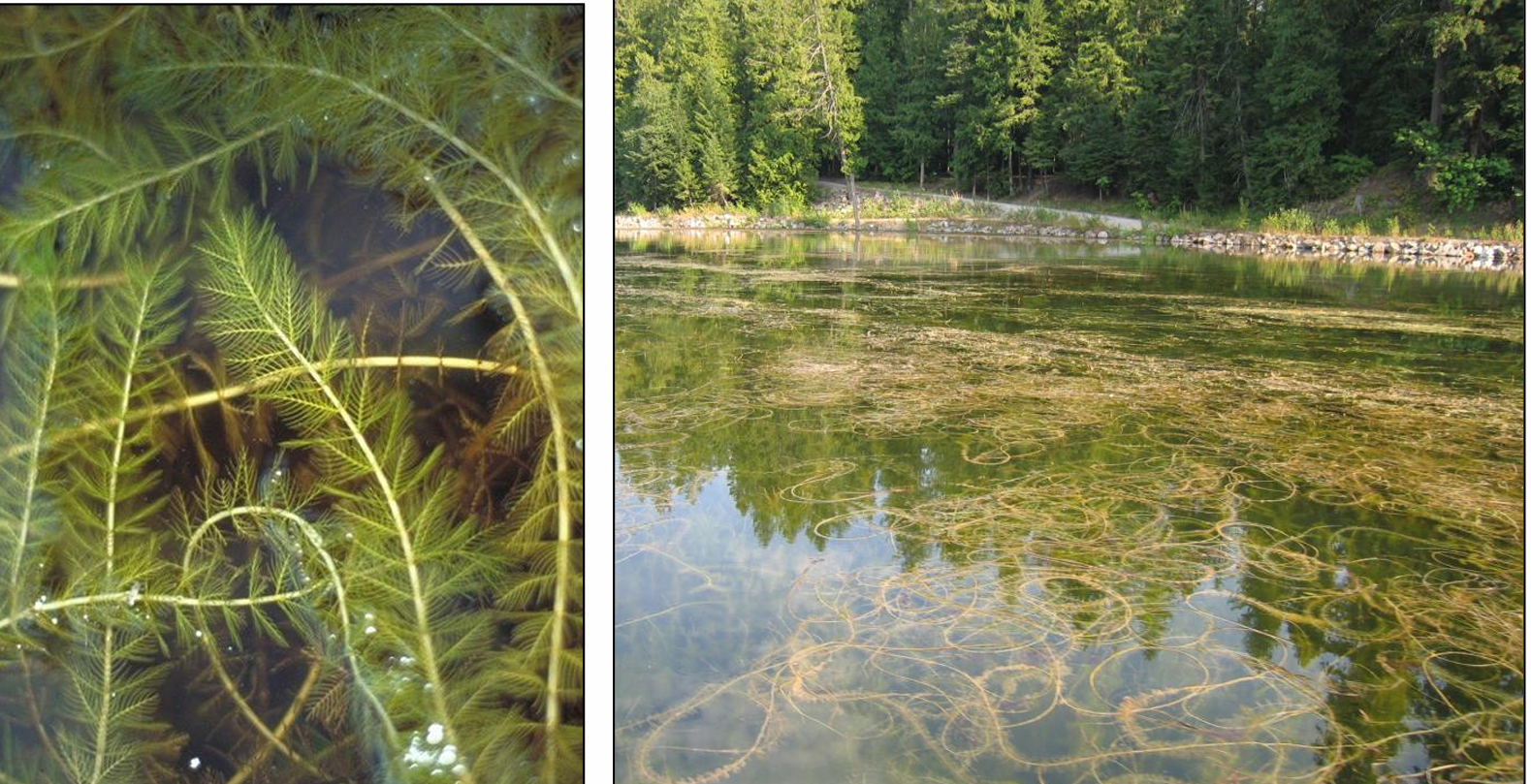
Hydrilla verticillata (Hydrocharitaceae)): Identification
Hydrilla verticillata (Hydrocharitaceae)→ hydrilla, waterthyme
CO LIST A
• Dioecious, perennial, submerged aquatic species.
• Female flowers consist of 3 sepals and 3 petals, white to reddish brown.
• Male flowers are inconspicuous and green.
• Reproduction by tubers, turions, seeds and stem fragments.
• Stems near the top of the water column are highly branched, forming dense mats.

Myriophyllum spicatum (Haloragaceae): Identification
Myriophyllum spicatum (Haloragaceae) → Eurasian watermilfoil
CO LIST B
• Produces by seed, but most reproduction is accomplished through plant fragmentation and stolons.
• Flowers are produced on a spike protruding out of the water.
• Prefers lakes, ponds and other slow moving water bodies.
• Tolerates a wide range of water conditions, including high salinity levels
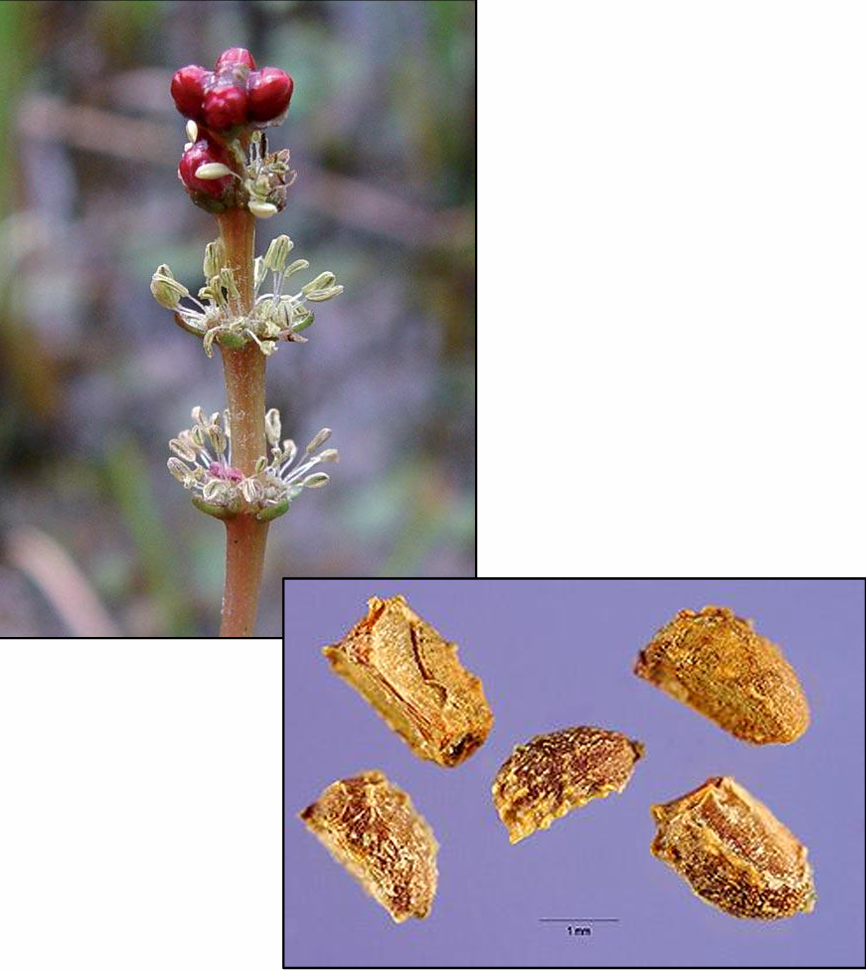
Ambrosia artemisiifolia (Asteraceae)
Ambrosia artemisiifolia (Asteraceae)→ common ragweed
• Native to all of mainland US and many areas of Canada
• Annual Ambrosia artemisiifolia: Identification
• Leaves deeply lobed, with hairy leaf surface
• Stems erect, branching above, with coarse hairs
• Plant can grow 1-3 ft. tall
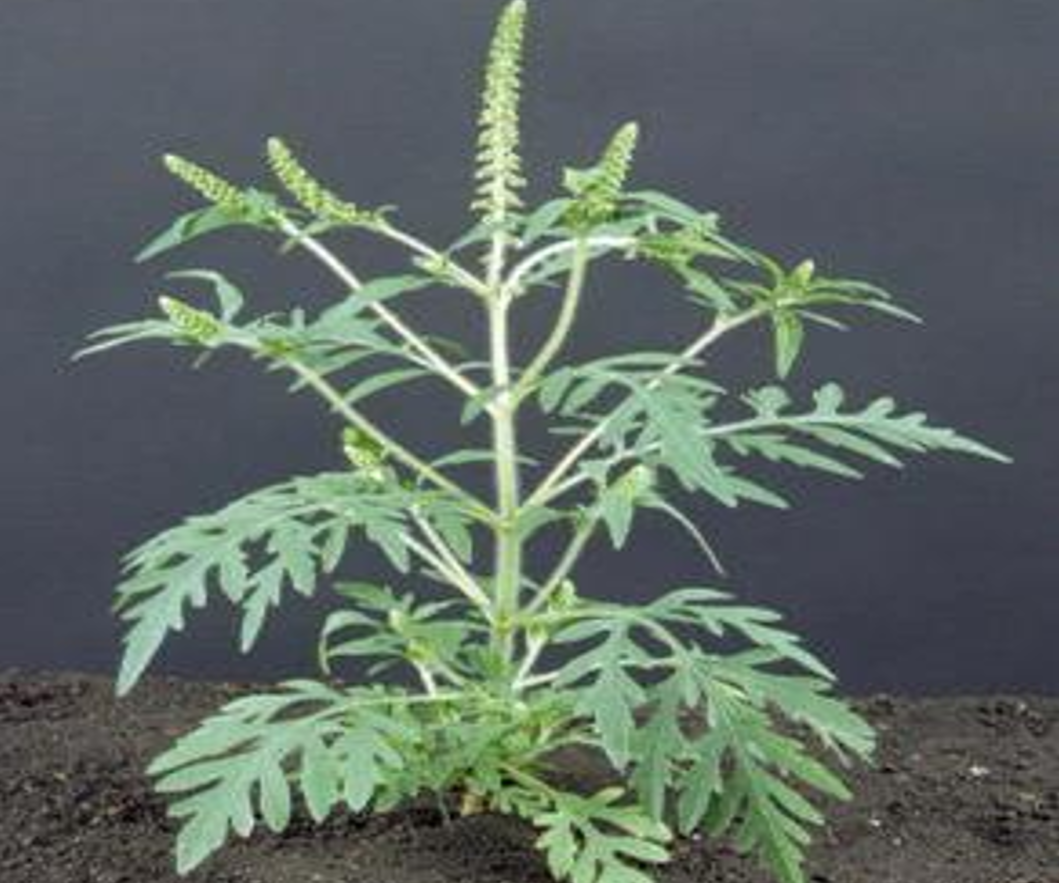
Ambrosia artemisiifolia (Asteraceae): identification
Ambrosia artemisiifolia (Asteraceae)→ common ragweed
• Flowers greenish yellow and found on the ends of branches
• Fruits are yellowish to reddish brown, woody, spined, and ridged
• Alternate name: annual ragweed
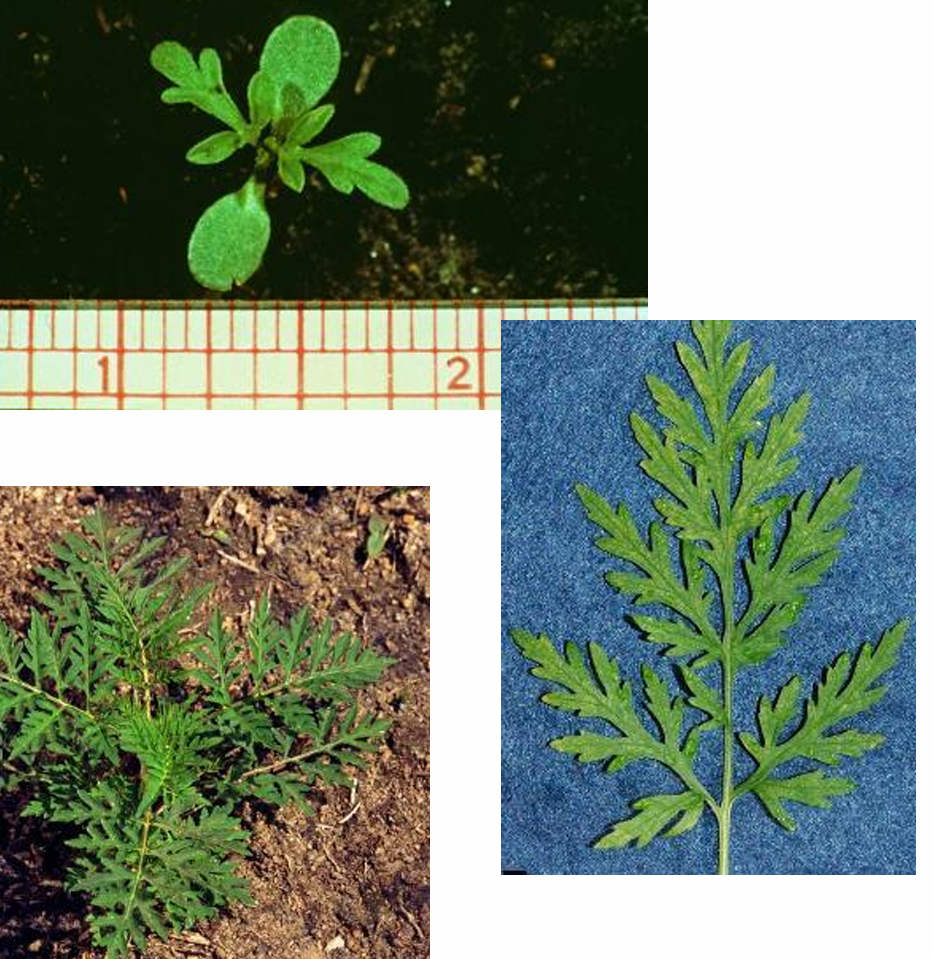
Scorzonera laciniata (Asteraceae) → cutleaf vipergrass
Scorzonera laciniata (Asteraceae) → cutleaf vipergrass
- Biennial.- Basal leaves are deeply cut and oblanceolate
– up to 8 in. long.
- Stem leaves are smaller, entire.
- Multiple erect stems, hollow, and sparsely hairy.
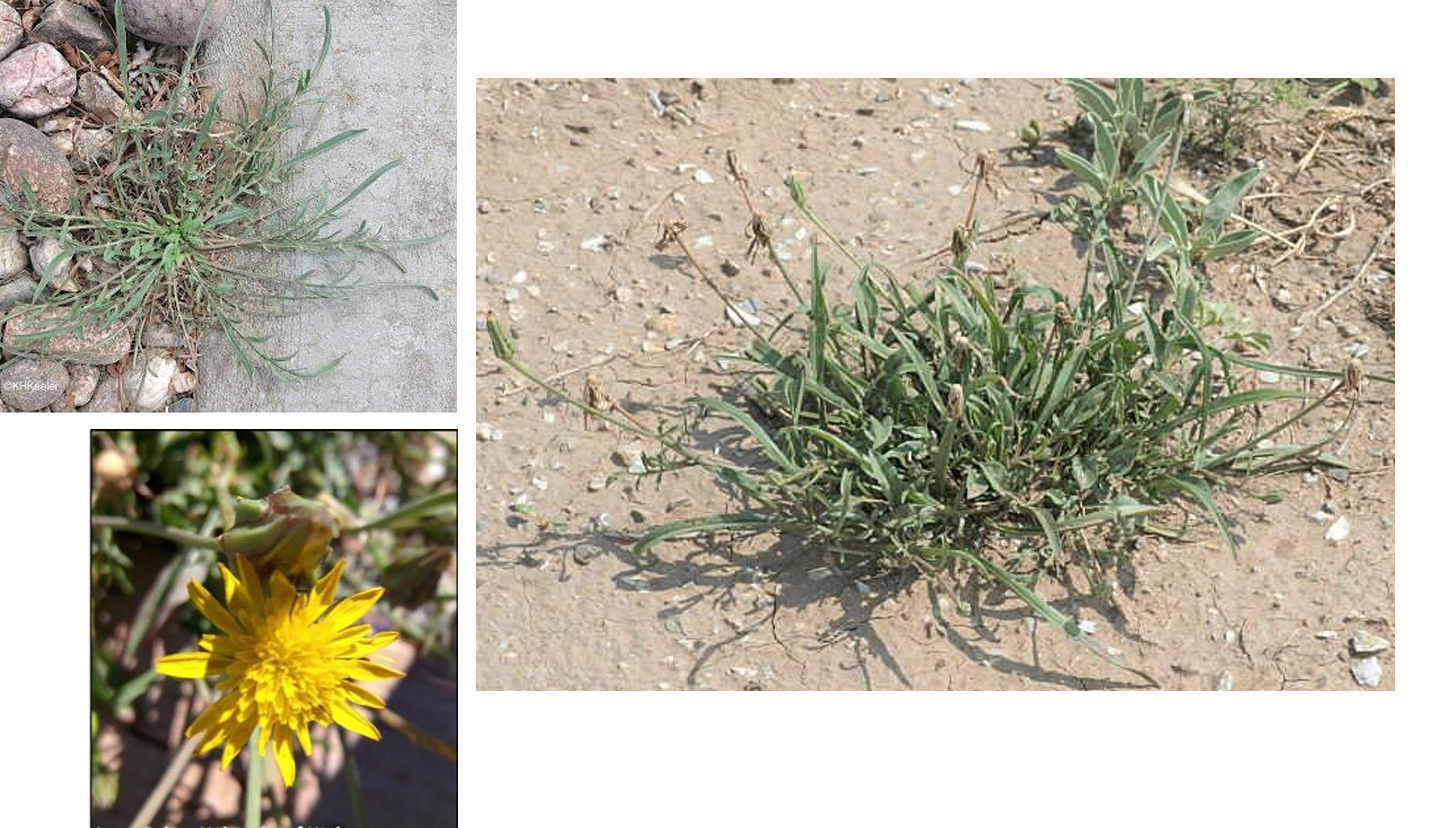
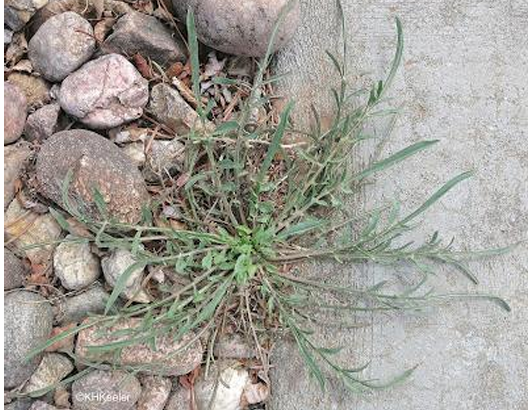
Scorzonera laciniata (Asteraceae: identification)
Scorzonera laciniata (Asteraceae) → cutleaf vipergrass
- Biennial.
Reproduces by seed.
- Bright, yellow flowers, about 1-2 inches wide.
- Resemble western salsify or dandelion flower.
- Each stem has one flower.
- Basal leaves are deeply cut and oblanceolate
– up to 8 in. long.
-Stem leaves are smaller, entire.
- Multiple erect stems, hollow, and sparsely hairy


WHO IS SHE?
Scorzonera laciniata (Asteraceae) → cutleaf vipergrass
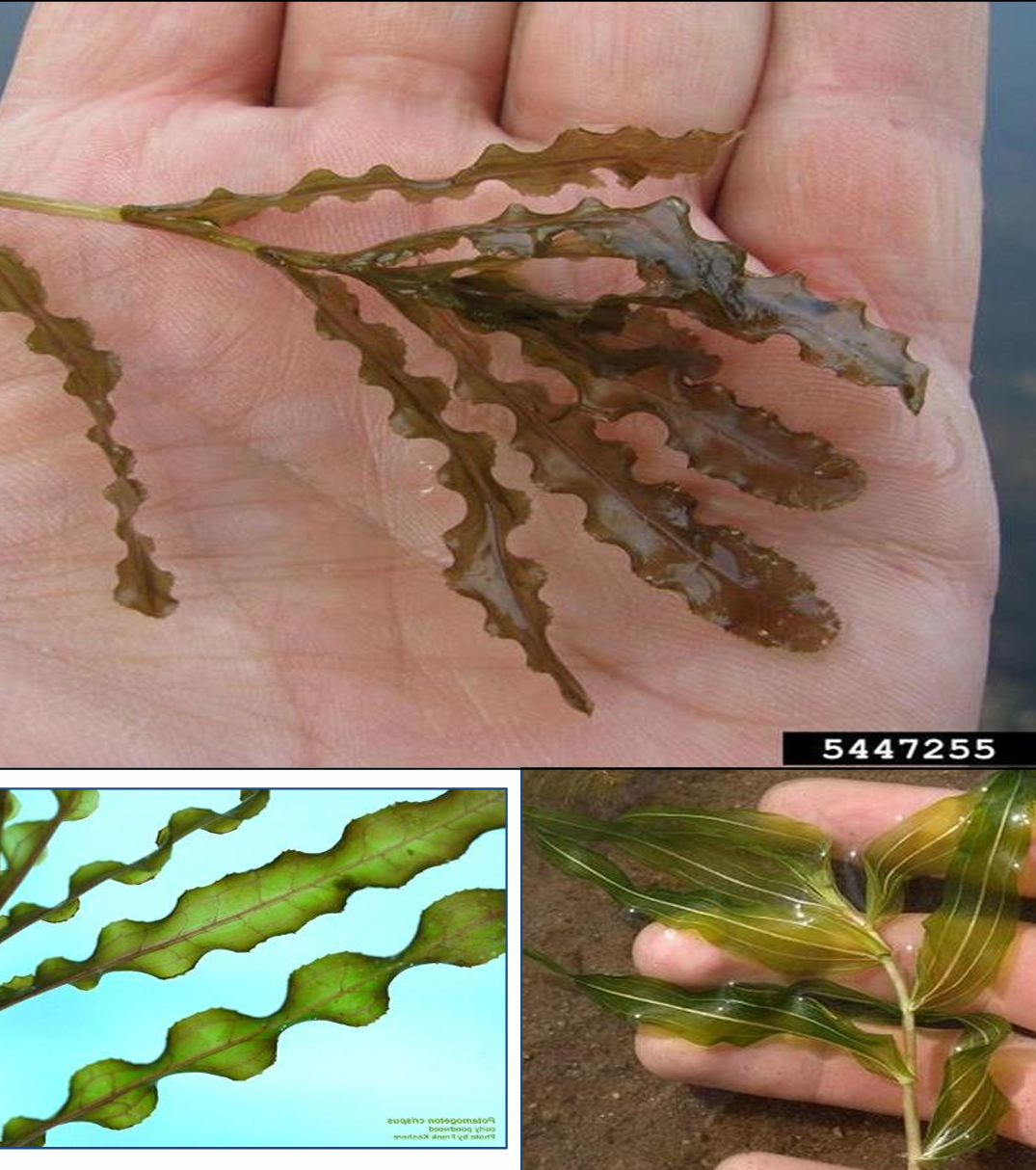
WHO IS SHE?
Potamogeton crispus (Potamogetonaceae)→ curlyleaf pondweed
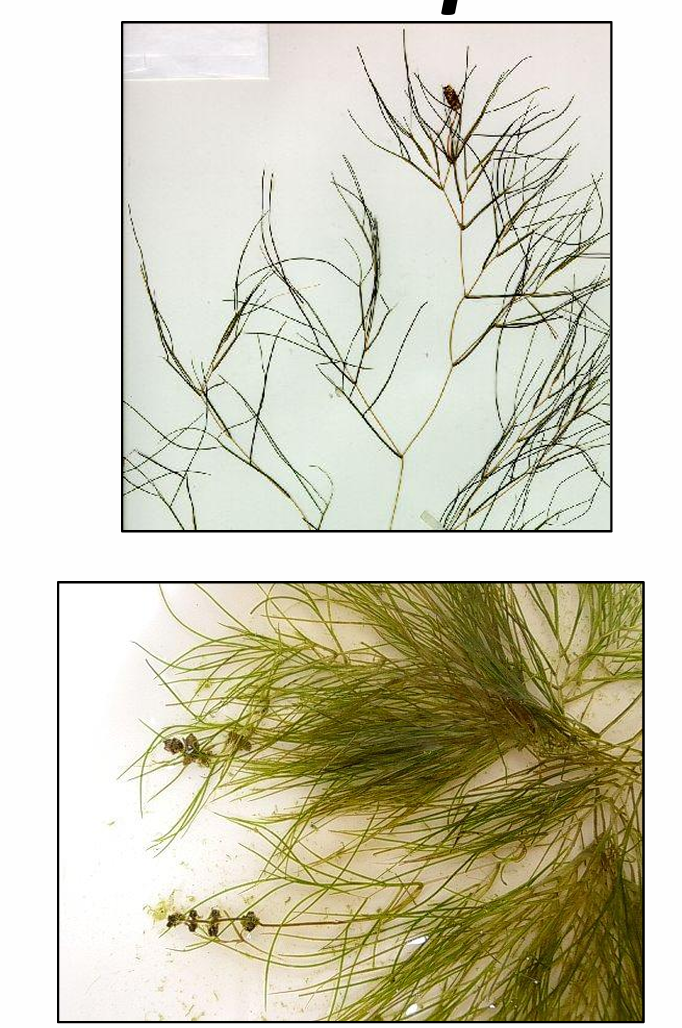
WHO IS SHE?
Stuckenia pectinata (Potamogetonaceae)→ sago pondweed

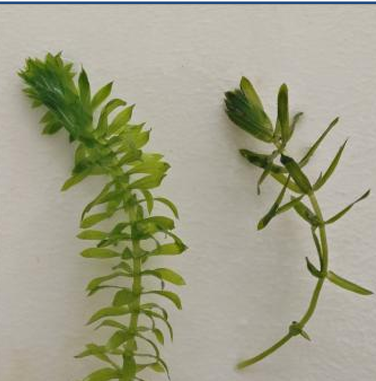
WHO IS SHE?
Hydrilla verticillata (Hydrocharitaceae) → hydrilla, waterthyme
CO NOXIOUS WEED LIST A
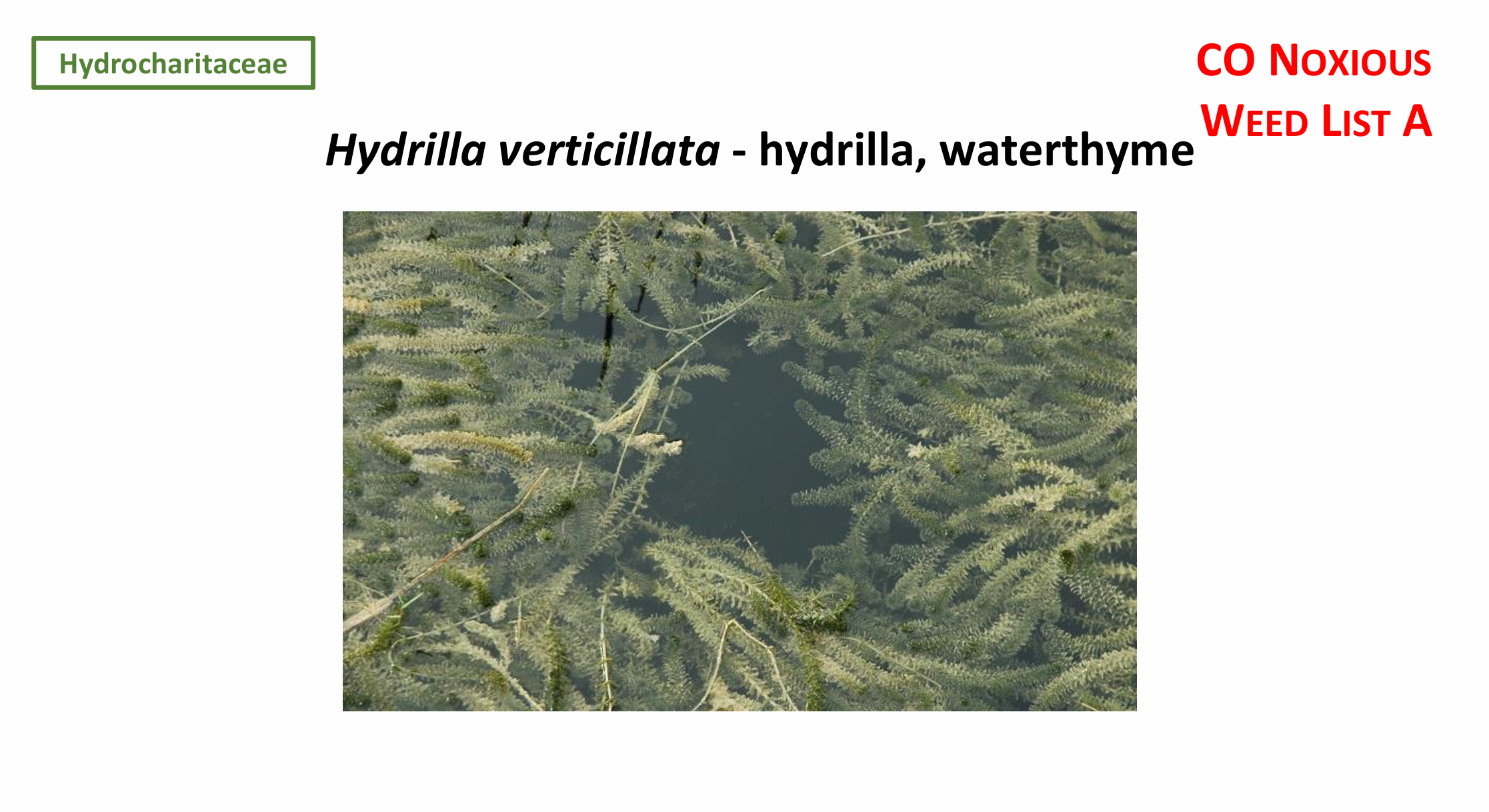

WHO IS SHE?
Myriophyllum spicatum (Haloragaceae) → Eurasian watermilfoil
CO NOXIOUS WEED LIST B

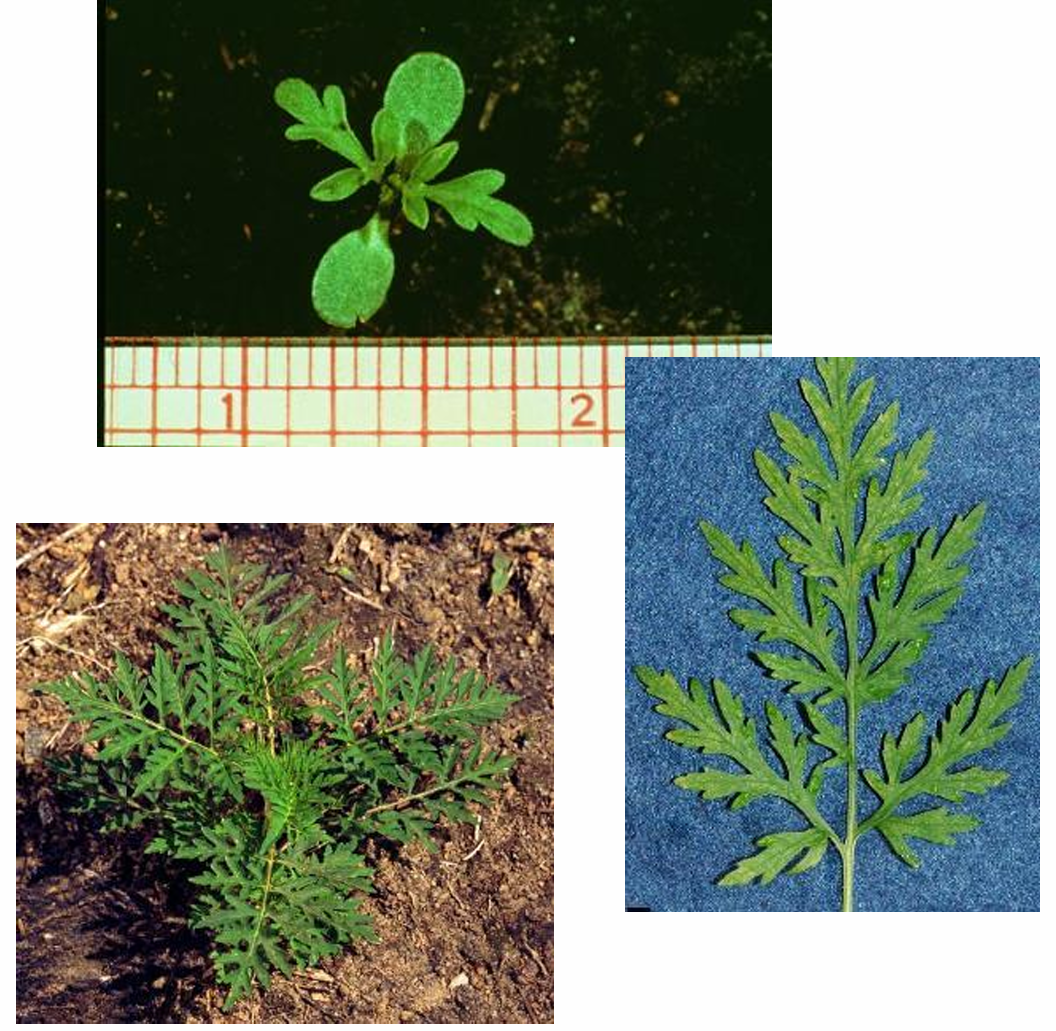
WHO IS SHE?
Ambrosia artemisiifolia (Asteraceae)→ common ragweed

What weeds (Group 7) are CO List A?
Hydrilla verticillata (Hydrocharitaceae) → hydrilla, waterthyme
What weeds (Group 7) are CO List B?
Myriophyllum spicatum (Haloragaceae) → Eurasian watermilfoil
What weeds (Group 7) are Native to North America?
Stuckenia pectinata (Potamogetonaceae)→ sago pondweed
Ambrosia artemisiifolia (Asteraceae) → common ragweed
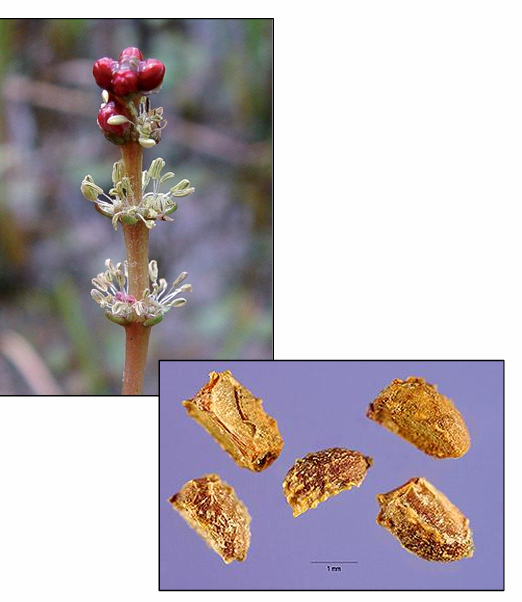
WHO IS SHE?
Myriophyllum spicatum (Haloragaceae) → Eurasian watermilfoil
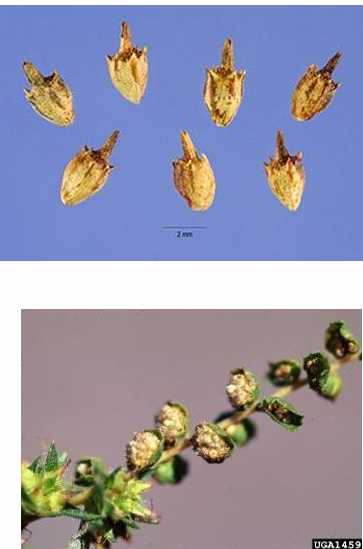
WHO IS SHE?
Ambrosia artemisiifolia (Asteraceae) → common ragweed
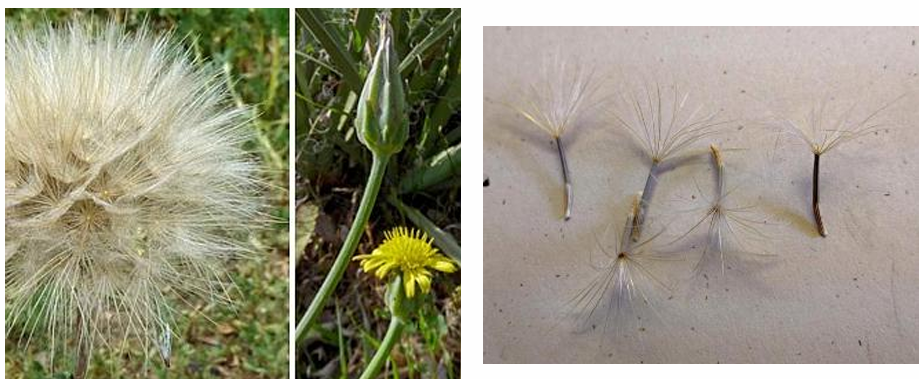
WHO IS SHE?
Scorzonera laciniata (Asteraceae) → cutleaf vipergrass
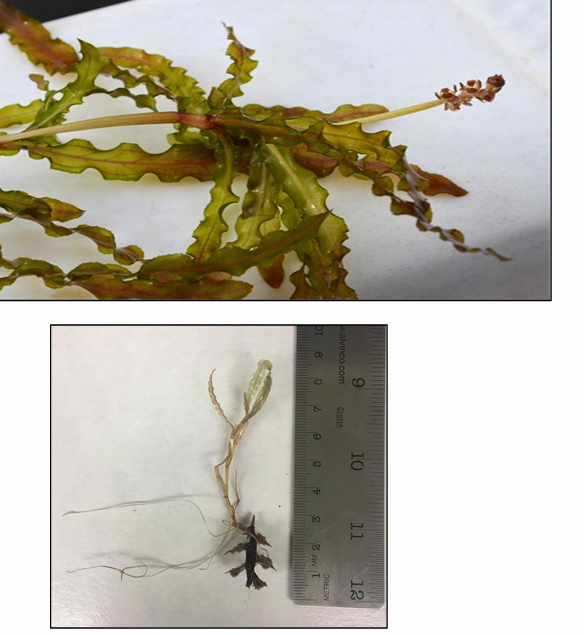
WHO IS SHE?
Potamogeton crispus (Potamogetonaceae) → curlyleaf pondweed

WHO IS SHE?
Stuckenia pectinata (Potamogetonaceae) → sago pondweed
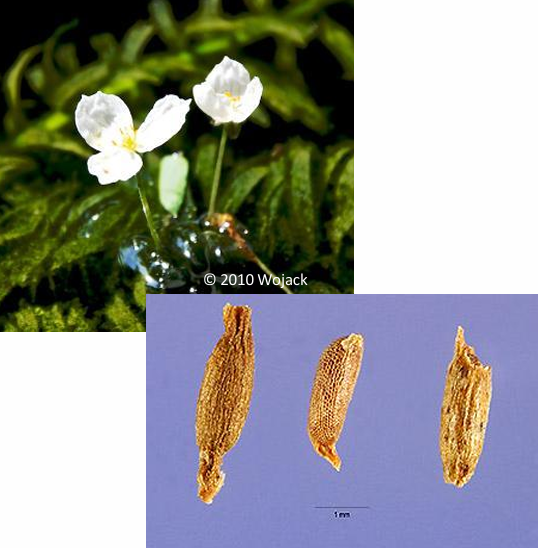
WHO IS SHE?
Hydrilla verticillata (Hydrocharitaceae) - hydrilla, waterthyme
CO NOXIOUS WEED LIST A
WHO AM I?
• Native to Eurasia
• Forms dense mats in the water, which can seriously impact water quality when they die off
• Can alter the nutritional dynamics of a fertile lake causing heavy summer algae blooms
• Highly adaptable to different locations and sediment types; can tolerate extreme conditions
• Flower stalks stick above the water’s surface and appear reddish-brown in color
• Plant produces small greenish brown pine cone look-a-likes called turions which sprout new plants
• Extensive root system can tolerate extreme conditions (has even been found growing under inches of snow and ice!)
Potamogeton crispus (Potamogetonaceae)→ curlyleaf pondweed
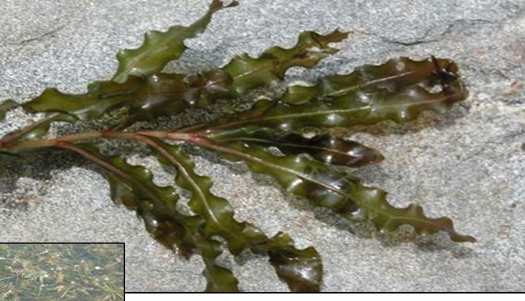
WHO AM I?
• Native to North America
• Submerged portions of the plant provides habitat for many micro and macro invertebrates; those invertebrates are then used as food for fish and many waterfowl
•Can become problematic when dense stands form in recreational waters and irrigation canal
• Perennial, submerged aquatic
• Stems are thin, long and highly branched
• Leaves very thin and filament-like, about 1/16 in. wide and 2-12 in. long tapering to a point
• Leaves grow in thick layers, originating from a sheat
Stuckenia pectinata (Potamogetonaceae) → sago pondweed
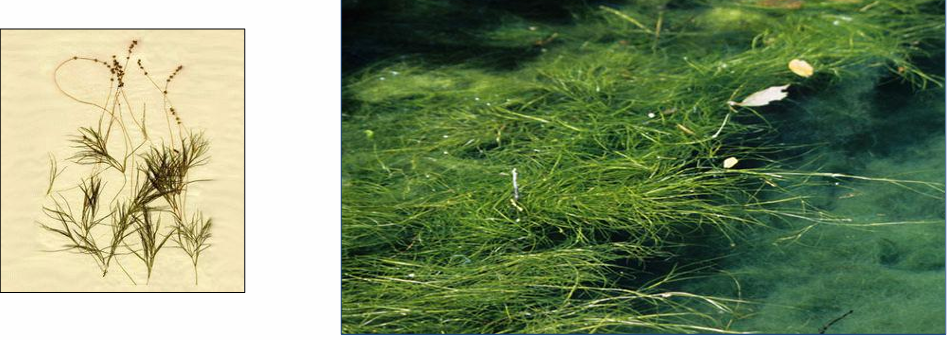
WHO AM I?
• Native to Eurasia, but found in Africa, Australia, North America and South America.
• Commonly introduced as an aquarium spp.
• No populations known to exist in CO
• There is only one _______ sp. worldwide.
• Commonly confused with Brazilian waterweed (Egeria densa), another invasive aquatic spp
Hydrilla verticillata (Hydrocharitacea) → hydrilla, waterthyme
CO NOXIOUS WEED LIST A
• Dioecious, perennial, submerged aquatic species.
• Female flowers consist of 3 sepals and 3 petals, white to reddish brown.
• Male flowers are inconspicuous and green.
• Reproduction by tubers, turions, seeds and stem fragments.
• Stems near the top of the water column are highly branched, forming dense mats.
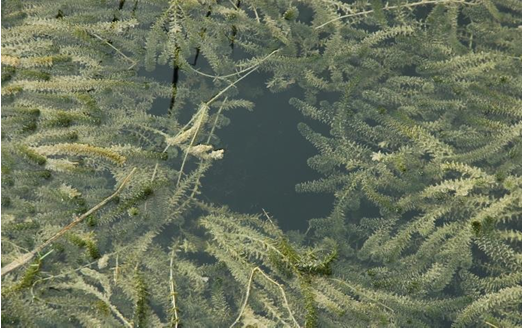
WHO AM I?
• Native to Europe, Asia and Africa.
• Introduced several times as an aquarium plant, as early as 1940.
• Transported around the U.S. on contaminated boats and other recreation equipment
Myriophyllum spicatum (Haloragacea) → Eurasian watermilfoil
CO NOXIOUS WEED LIST B
WHO AM I?
• Native to all of mainland US and many areas of Canada
• Found along roadsides, ditches, waste places, rangeland, and crops
• Not highly competitive in crops but resistance to multiple herbicide MOA’s has been reported
Ambrosia artemisiifolia (Asteraceae)→ common ragweed
WHO AM I?
-Native to Europe
-Grows in disturbed areas such as roadsides, pastures, and lawns.
- Not widely reported across the western US.
Biennial.
- Basal leaves are deeply cut and oblanceolate
– up to 8 in. long.- Stem leaves are smaller, entire.
- Multiple erect stems, hollow, and sparsely hairy.
Scorzonera laciniata (Asteraceae) → cutleaf vipergrass
What weeds (Group 7) are in the Potamogetonaceae Family?
Potamogeton crispus → curlyleaf pondweed
Stuckenia pectinata → sago pondweed
What weeds (Group 7) are in the Hydrocharitaceae Family?
Hydrilla verticillata → hydrilla
CO NOXIOUS WEED LIST A
What weeds (Group 7) are in the Haloragaceae Family?
Myriophyllum spicatum → Eurasian watermilfoil
CO NOXIOUS WEED LIST B
What weeds (Group 7) are in the Asteracea Family?
Ambrosia artemisiifolia → common ragweed
Scorzonera laciniata → cutleaf vipergrass
Potamogeton -
Potamogeton crispus
curlyleaf pondweed (Potamogetonaceae)
Stuckenia -
Stuckenia pectinata
sago pondweed (Potamogetonaceae)
Hydrilla -
Hydrilla verticillata
hydrilla (Hydrocharitaceae)
CO NOXIOUS WEED LIST A
Myriophyllum -
Myriophyllum spicatum
Eurasian watermilfoil (Haloragaceae)
CO NOXIOUS WEED LIST B
Ambrosia -
Ambrosia artemisiifolia
common ragweed (Asteraceae)
Scorzonera -
Scorzonera laciniata
cutleaf vipergrass (Asteraceae)